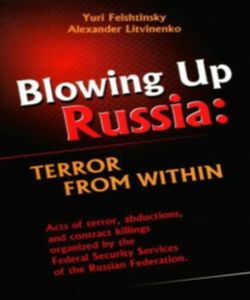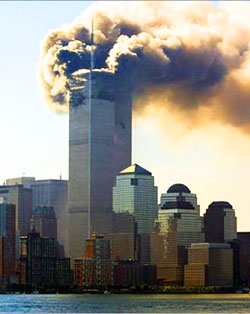State-sponsored terror in the world
Inner Terror: Your Government Doesn’t Mind Killing You
 One of the most controversial and least discussed aspects of Western society is the notion that Western governments would be able to, let alone actually, kill their own civilians. But is reality far worse than what we seem incapable of imagining?
One of the most controversial and least discussed aspects of Western society is the notion that Western governments would be able to, let alone actually, kill their own civilians. But is reality far worse than what we seem incapable of imagining?
In the movie V for Vendetta, a police detective ponders: “I want to ask a question. I don’t care whether you answer me or not. I just need to ask this aloud… The question that I have to ask is: what if the worst and most horrifying attack in this country’s history was not the work of religious extremists?” His assistant objects: “We know it was. They were caught. They confessed.” The detective adds: “And they were executed. I know. And maybe that’s really what happened… What if someone else killed all those people? Would you really want to know who that was? Even if it was someone working for this government? That’s my question. If our own government was responsible…was responsible for the deaths of almost 100,000 people, would you really want to know?”
On 31 December 2006, three people were killed in the Thai capital Bangkok. The military-backed interim regime blamed the ousted prime minister, Thaksin Shinawatra, and his supporters as prime suspects. But US security expert Zachary Abuza said that “it could be the military trying to justify further crackdowns”, thus demonizing the former prime minister so that it could continue to enforce martial law. Whom to believe?
One of the major stumbling blocks to accepting a major conspiracy (such as the claim that 9/11 was an “inside job” performed or allowed by the authorities) is the unwillingness to believe that a nation’s institutions would kill its own civilians. Thailand is not a stable Western nation and many believe that the Western world is free of such atrocious acts, whereas the sad truth is that since World War II many Western nations have seen a long series of state-sponsored terrorism—directed against its own citizens.
Russia’s 9/99 bombings and the stifling of dissent
The deceased Russian dissident and former spy Alexander Litvinenko argued in his book Blowing Up Russia: Terror from Within that certain Russian terrorist attacks had been engineered by the Kremlin. He alleged that agents from the FSB (Federal Security Service of the Russian Federation, the successor to the KGB) coordinated the September 1999 bombings (popularly referred to as the 9/99 bombings) that killed more than 300 people during explosions in three apartment buildings in the capital Moscow and the southern Russian city of Volgodonsk in a period of two weeks. The Russian authorities, directed by the newly appointed prime-minister Vladimir Putin, blamed the bombings on Chechen separatists and, in response, ordered the invasion of Chechnya.
Former FSB officer Litvinenko, Johns Hopkins University and Hoover Institute scholar David Satter and Russian lawmaker Sergei Yushenkov have asserted that the bombings were actually “false flag” attacks perpetrated by the FSB in order to legitimate the resumption of military activities in Chechnya and bring Vladimir Putin to the Kremlin and the FSB to power. False flag operations are covert operations conducted by governments, corporations or other organizations, which are designed to appear as if they were carried out by other entities than the ones really responsible. The name is derived from the military concept of flying false colors, which was practiced in both naval and land warfare. A famous example is Operation Greif led by Otto Skorzeny,” in which he ordered his men into action in American uniforms during the final stages of World War II.
 Litvinenko, Satter and Yushenkov thus charged Putin with ordering state-sponsored terrorism, aimed at its own nation, killing 300 innocent citizens. This is not just a conspiracy theory emanating from Russian dissidents or critics of Putin’s regime.
Litvinenko, Satter and Yushenkov thus charged Putin with ordering state-sponsored terrorism, aimed at its own nation, killing 300 innocent citizens. This is not just a conspiracy theory emanating from Russian dissidents or critics of Putin’s regime.
Shortly after the final attack (when a truck bomb exploded on 16 September outside a nine-storey apartment complex in the city of Volgodonsk, killing 17 people), FSB operatives were caught by local police and citizens in the city of Ryazan planting a bomb with a detonator in the basement of an apartment building at 14/16 Novosyelov on the night of 22 September 1999. An alert resident of the building noticed strangers moving heavy sugar sacks into the basement from a car. Explosives experts found that the bomb tested positive for hexogen and all roads from the town were brought under heavy surveillance, but no leads were found. A telephone service employee tapped into long-distance phone calls and managed to detect a conversation in which an out-of-town person suggested to take care and to watch for patrols. That person’s number was found to belong to an FSB office in Moscow.
On 24 September, Nikolai Patrushev, the head of the FSB, stated that the bomb had been a dummy and that the entire operation was a training exercise. The original chemical test was declared “inaccurate” due to contamination of the analysis apparatus from a previous test. As a consequence, the General Prosecutor’s office closed the criminal investigation in April 2000.
But despite these official denials, Yuri Tkachenko, the explosives expert who defused the bomb, insisted that it was real. Tkachenko also said that the explosives, including a timer, power source and detonator, were genuine military equipment. He added that the gas analyzer that tested the vapors coming from the sacks unmistakably indicated the presence of hexogen— not sugar, as the FSB officially claimed The police officers who answered the original call and discovered the bomb also insisted that the incident was not an exercise and that it was obvious from its appearance that the substance in the bomb was not sugar.
Litvinenko’s prolonged fight for life following the ingestion of radionuclide polonium-210 in November 2006 was popularly depicted as Putin’s revenge against this whistleblower. But Litvinenko was not the only or first person to die. Sergei Yushenkov, who shared his interest in the 9/99 bombings, was gunned down at the entrance of his Moscow apartment block on 17 April 2003.’ In this case, there may not be a direct relationship with the 9/99 bombings, as Yushenkov was a member of parliament and the ninth member of parliament to be shot dead in as many years, none of the cases ever having been solved. Still, one member of the Liberal Russia party, Yuly Rybakov, speculated in the Moscow Times newspaper that Yushenkov could have been killed for his attempts to show that the security services are guilty of the 9/99 bombings.
Yushenkov had been responsible for inviting Mikhail Trepashkin, a Moscow attorney and a former FSB agent, to assist with an independent investigation of the 9/99 bombings. After Yushenkov’s death and the collapse of the official investigation, two Russian-American sisters Tatyana and Alyona Morozova, whose mother was killed in the 9/99 bombings, hired Trepashkin to represent them. While preparing for the trial of the two Russian Muslims who were officially charged with the attacks, Trepashkin uncovered a trail of a mysterious suspect whose description had disappeared from the files. The suspect turned out to be one of his former FSB colleagues. He also found a witness who testified that evidence was doctored to lead the investigation away from incriminating the FSB.
 On 22 October 2003, a week before the hearings commenced, Trepashkin was arrested after what appeared to be a traffic stop when, he claims, FSB agents stationed on the side of the road tossed a satchel with a stolen handgun into his vehicle. Trepashkin was imprisoned, unable to attend the hearings and thus smoothing the path for an easy conviction of the two Muslim suspects. However, the Trepashkin story made it into the Western media and on 20 May 2004, an article in the Los Angeles Times gave an overview of his tribulations, adding that the central suspect was FSB agent Vladimir Romanovich. According to Trepashkin, Romanovich was an FSB contact charged with infiltrating Chechen criminal groups in Moscow. As evidence, Trepashkin referred to Romanovich’s mysterious release from custody after an arrest by the organized crime squad several years before. Trepashkin added that Romanovich was recognized by the landlord at one of the apartment buildings. The landlord, Mark Blumenfeld, confirmed that he had worked with the FSB on a sketch of the man he’d seen, only to be cast aside when his composite bore no resemblance to Gochiyayev, the man whom officials had identified as one of the masterminds behind the bombing. Romanovich subsequently died in a car crash in Cyprus.
On 22 October 2003, a week before the hearings commenced, Trepashkin was arrested after what appeared to be a traffic stop when, he claims, FSB agents stationed on the side of the road tossed a satchel with a stolen handgun into his vehicle. Trepashkin was imprisoned, unable to attend the hearings and thus smoothing the path for an easy conviction of the two Muslim suspects. However, the Trepashkin story made it into the Western media and on 20 May 2004, an article in the Los Angeles Times gave an overview of his tribulations, adding that the central suspect was FSB agent Vladimir Romanovich. According to Trepashkin, Romanovich was an FSB contact charged with infiltrating Chechen criminal groups in Moscow. As evidence, Trepashkin referred to Romanovich’s mysterious release from custody after an arrest by the organized crime squad several years before. Trepashkin added that Romanovich was recognized by the landlord at one of the apartment buildings. The landlord, Mark Blumenfeld, confirmed that he had worked with the FSB on a sketch of the man he’d seen, only to be cast aside when his composite bore no resemblance to Gochiyayev, the man whom officials had identified as one of the masterminds behind the bombing. Romanovich subsequently died in a car crash in Cyprus.
In 2003, Yuri Shchekochikhin, another MP who was on the independent 9/99 commission, died in mysterious circumstances and is believed to have been poisoned. Shchekochikhin was taken ill suddenly and developed awful symptoms: his skin peeled, he was covered in boils, his hair fell out and he eventually suffered respiratory failure. His colleagues were unable to investigate his death because they were told that the autopsy results were secret and would not be released even to his relatives. Shchekochikhin was also an editor at Novaya Gazeta, the independent newspaper where Anna Politkovskaya, the fierce Kremlin critic, worked until she was gunned down in October 2006, weeks before Litvinenko died in a London hospital.
NATO’s secret war in Belgium
Whereas in the aftermath of Litvinenko’s mysterious death in November 2006 people were willing to entertain that Putin could order attacks against his own citizens, “surely” Putin’s Western equivalents, George W. Bush and Tony Blair, would be unable to? And as such, a “conspiracy theory” hits its major hurdle: the willingness to accept one scenario, yet reject an identical scenario elsewhere—closer to if not at home.
Let us therefore begin in Belgium. In 1983, the Cellules Communistes Combattantes (CCC) was founded in Belgium and claimed to be the only Marxist revolutionary organization that would wage an armed fight against the capitalist system. In 1984 and 1985, 28 “terrorist” attacks were committed by the CCC, allegedly in the hope of engaging the “proletariat” in its revolution. The figure of 28 is actually a record number when it comes to armed terrorist attacks by one group in Western Europe. The CCC targets were, like 9/11 but unlike the 7/7 London bombings, flagships of the Western economy and American hegemony: factories that produced military equipment, the headquarters of political parties or offices, military infrastructure, the police force, a NATO oil pipeline and banks. The CCC furthermore operated not in one specific region but across Belgium, which underlined their capability to strike anywhere—and cause fear anywhere. On 1 May 1985, the group exploded a small van that was placed in front of a government office but, unfortunately, two firefighters died in this explosion. “Unfortunate”, for the CCC’s campaigns were organized to minimize, if not exclude, a human death toll. Indeed, this makes the CCC not fit neatly into those attacks in which civilian casualties are acceptable. But this was just stage one.
 The CCC became part of the government investigation after Belgium, together with Switzerland and Italy, set up parliamentary commissions following the discoveries of “stay-behind armies” in 1990. The scope of the investigation was the extent to which the existence of a national secret army, coordinated by NATO (and inspired by the US and the UK in the wake of World War II) within several NATO and non-NATO states, had interfered with these democracies.
The CCC became part of the government investigation after Belgium, together with Switzerland and Italy, set up parliamentary commissions following the discoveries of “stay-behind armies” in 1990. The scope of the investigation was the extent to which the existence of a national secret army, coordinated by NATO (and inspired by the US and the UK in the wake of World War II) within several NATO and non-NATO states, had interfered with these democracies.
The Belgian defense minister, the Socialist Guy Coeme, who stated to have been unaware of the existence of the secret armies, had this to say about this secret army’s involvement with terrorism: “Furthermore, I want to know whether there exists a link between the activities of this secret network and the wave of crime and terror which our country suffered from during the past years.”
Coeme was referring to the years 1983 to 1985 and the CCC, but also to a series of brutal robberies and attacks by the so-called Nijvel gang, in which the geographic area around Brussels saw 14 brutal terrorist attacks on shoppers in supermarkets. These attacks left 28 people dead and many more injured in a series of 17 burglaries and armed robberies, which in late 1985 turned extremely violent. In the three final attacks, 16 people died during armed robberies in supermarkets in Braine-l’Alleud, Overijse and Aalst, the gang stealing (in total) not more than US$56,000 (reducing a human life to $3,500).
The Belgian Senate inquiry revealed that the secret army was staffed by Belgian citizens and took its orders from the Belgian State Security, the equivalent of the Russian FBS or the American CIA. The cell was code-named SDRA8 and was directly linked to NATO’s stay-behind centers, the Allied Clandestine Committee (ACC) and the Clandestine Planning Committee (CPC). However, the Senate inquiry was unable to clarify whether the secret army had anything to do with the Nijvel gang murders, as the Belgian military secret service refused to co-operate.
Several journalists, including Allan Francovich, suggested that SDRA8 had linked up with the Belgian right-wing organisation Westland New Post (WNP), an opinion that was confirmed by WNP member Michel Libert, who stated during a televised interview that he had been told by his SDRA8 handlers that: ‘”You, Mr Libert, know nothing about why we’re doing this. Nothing at all. All we ask is that your group, with cover from the Gendarmerie, with cover from Security, carry out a job. Target: the supermarkets. Where are they? What kind of locks are there? What sort of protection do they have that could interfere with our operations? Does the store manager lock up? Or do they use an outside security company?'” Libert added: “We carried out the orders and sent in our reports: hours of opening and closing. Everything you want to know about a supermarket. What was this for? This was one amongst hundreds of missions. Something that had to be done. But the use it was all put to, that is the big question.” A “big question” that would soon be answered, and which had a human death toll of twenty-eight.
The logical conclusion is that there was a NATO-sponsored secret army operating within Belgium, apparently outside the knowledge and control of the government itself.
 A most interesting statement came from a member of the inquiry, Hugo Van Dienderen, who said: “This secret network did more than prepare for a war against a Communist threat… Agents tried to infiltrate peace movements. Certain American groups tried to contact them… A former director of the CIA [William Colby] leaves no doubt that it was their intelligence agencies that were at the basis of these networks.””
A most interesting statement came from a member of the inquiry, Hugo Van Dienderen, who said: “This secret network did more than prepare for a war against a Communist threat… Agents tried to infiltrate peace movements. Certain American groups tried to contact them… A former director of the CIA [William Colby] leaves no doubt that it was their intelligence agencies that were at the basis of these networks.””
When Jean Bultot, one of the suspected killers in the supermarket murders, spoke from his hideout in Paraguay, he stipulated that certain members of the gang were indeed part of the national intelligence network. He added, without being asked, that the activities of the CCC followed the same formula. Two police officers, Martial Lekeu and Robert Beijer, made similar statements. According to Lekeu: “There must exist a type of organization between the members of the national intelligence agency, the gendarmes and the judiciary department.
In my opinion, the attacks of the CCC are part of the same plan. One of the caches of the CCC was hired by a brother of a member of the State Security.”
And thus, the two terror campaigns that Belgium witnessed in the early 1980s were apparently carried out by a group of Belgians operating as a secret army, sponsored by an organization— NATO—to which Belgium not only belonged but whose headquarters it actually hosted.
Furthermore, though politicians were apparently unaware, the Belgian intelligence agencies were not, and they specifically and consistently accused “communists” (the CCC) as well as the “extreme right” (the Nijvel gang) of carrying out terror activity, whereas they were actually part of the planners if not executioners. Remarkably, in 1985, despite never-before-seen protest marches, NATO installed nuclear missiles in Belgium. This time, it seems the intended goal was not an invasion…
In 1995, the Belgian Chamber of Representatives organized a parliamentary inquiry into the effectiveness of the Belgian police and judiciary with regard to the Nijvel gang investigation. The conclusions of this inquiry, as well as the earlier Senate inquiry on SDRA8 and the Chamber inquiry on banditry, resulted in the preparation of new legislation governing the mission and methods of the Belgian State Security, which was passed in 1998.
Unlike the US government with its so-called Patriot Act, which was signed into law on 26 October 2001 in the aftermath of 9/11, the Belgian government decided to contain the powers of the intelligence and law enforcement network as much as possible, so that the willful complicity of the Belgian State Security in allowing, if not organizing, the deaths of people it was supposed to protect would not happen again.
From Nexus Magazine, February-March 2007
yogaesoteric
July 2010
